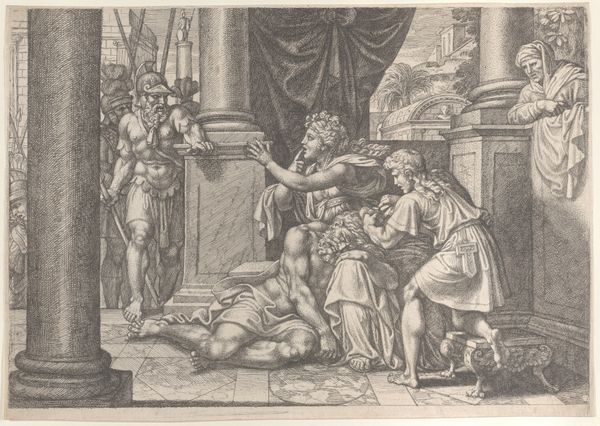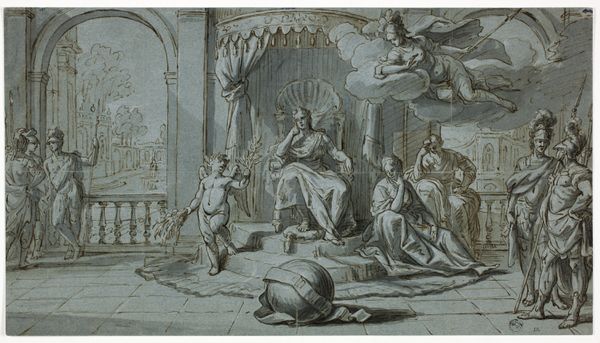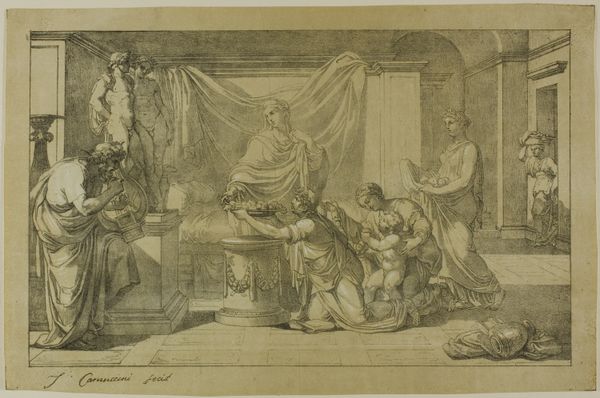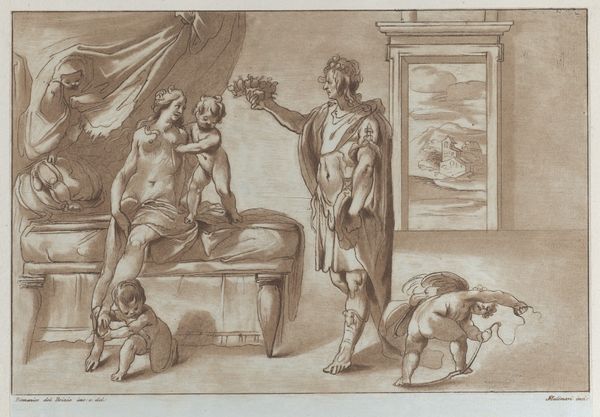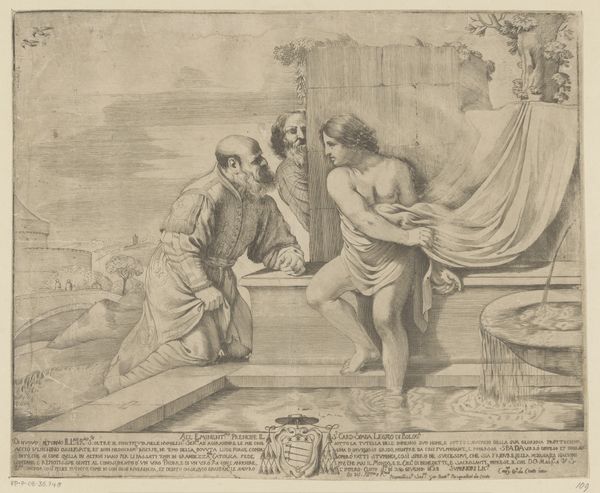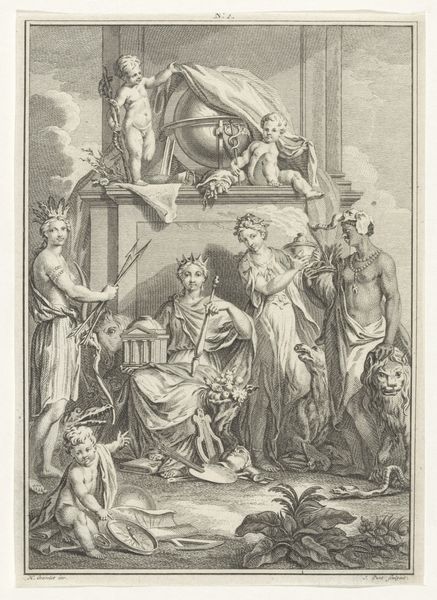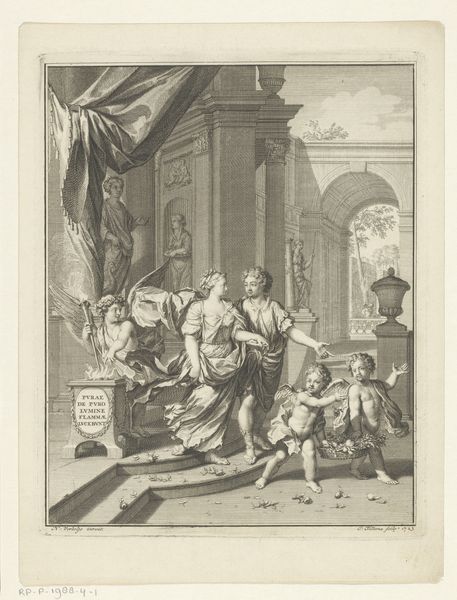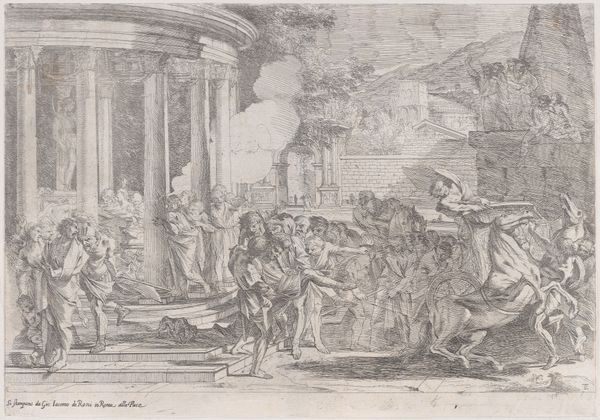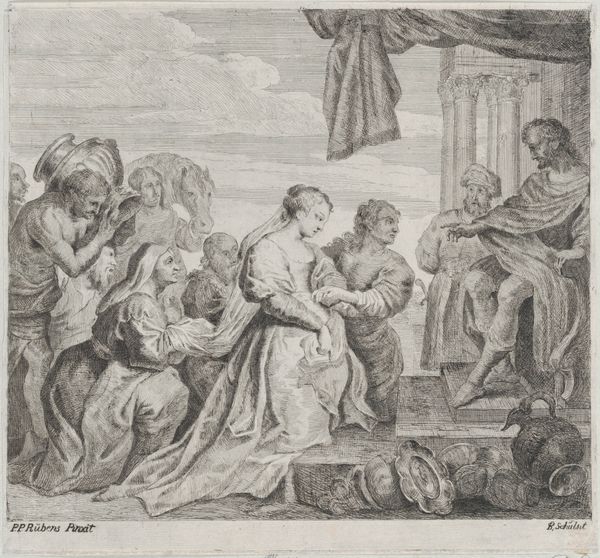
Dimensions: Sheet: 2 9/16 x 3 1/4 in. (6.5 x 8.3 cm)
Copyright: Public Domain
Curator: What strikes me immediately is the stillness, despite the narrative being depicted. There's an air of poised anticipation hanging over the scene. Editor: We're looking at "Moses Brought to Pharoah's Daughter," an engraving rendered sometime between 1795 and 1805 by Dent. This print depicts a well-known biblical scene. Curator: Ah yes, a dramatic convergence. Do you think the artist tried to amplify emotionality, or create a scene of political undertones? Editor: Possibly both. The figure of Pharaoh's daughter, enthroned and regal, occupies the focal point, embodying power but also, arguably, moral dilemma. The figures attending to her are rendered in positions communicating varied forms of engagement to the moral dilemma. The cityscape backdrop could underscore themes of earthly rule versus divine providence. Curator: It is hard to separate these figures from what we know, from cultural memory and religious and political history. Moses, represented as a vulnerable infant, becomes a symbol of hope and deliverance, which the artist captures and places center stage. Editor: Indeed. The stark contrast of light and shadow, so typical of baroque aesthetics, intensifies the emotional and moral weight of the encounter. Curator: Yet there’s something unsettling in the visual narrative. While visually opulent, the black and white tones used make the image lack warmth, creating a sense of alienation. Editor: That detachment, I believe, compels the viewer to engage actively, to discern the symbols and their collective significance within the unfolding drama. Curator: And consider its accessibility, created to exist not as painting on a wall for a privileged few, but on paper available to be reproduced and widely distributed. Editor: Precisely. This print serves as a fascinating window into how religious and historical narratives were visually disseminated and interpreted within specific social and political landscapes. I wonder if future artists grappled with conveying morality in art so directly. Curator: Perhaps they would prefer to avoid didactic pronouncements altogether and prefer to allow the audiences make their own conclusions about the piece and society at large. This is why art like "Moses Brought to Pharoah's Daughter" feels distinctly important, as a window into how images spoke so firmly about the artist's view of the past and its audience's future. Editor: Very well put. Thanks for shedding light on this image and reminding us how artworks capture time, meaning, and our moral convictions so powerfully.
Comments
No comments
Be the first to comment and join the conversation on the ultimate creative platform.
